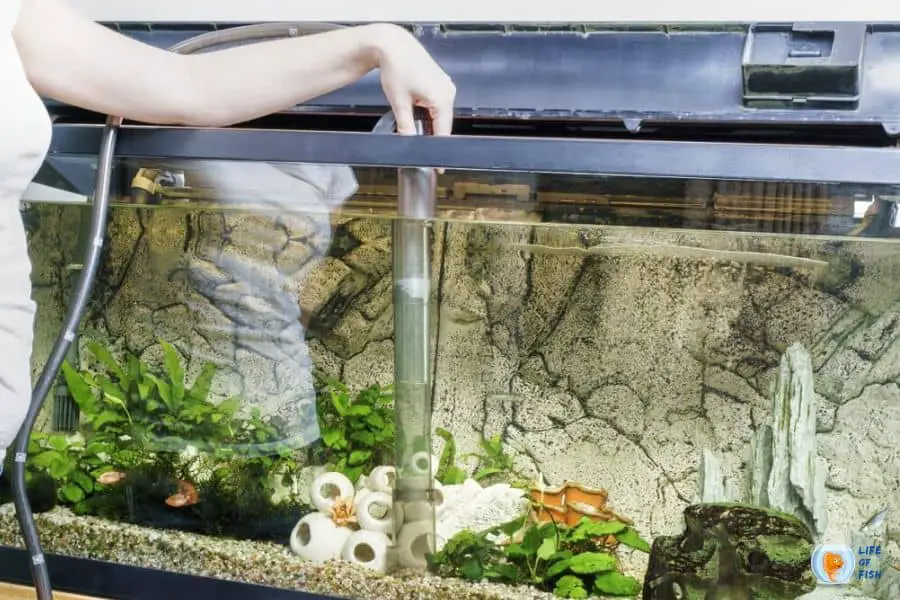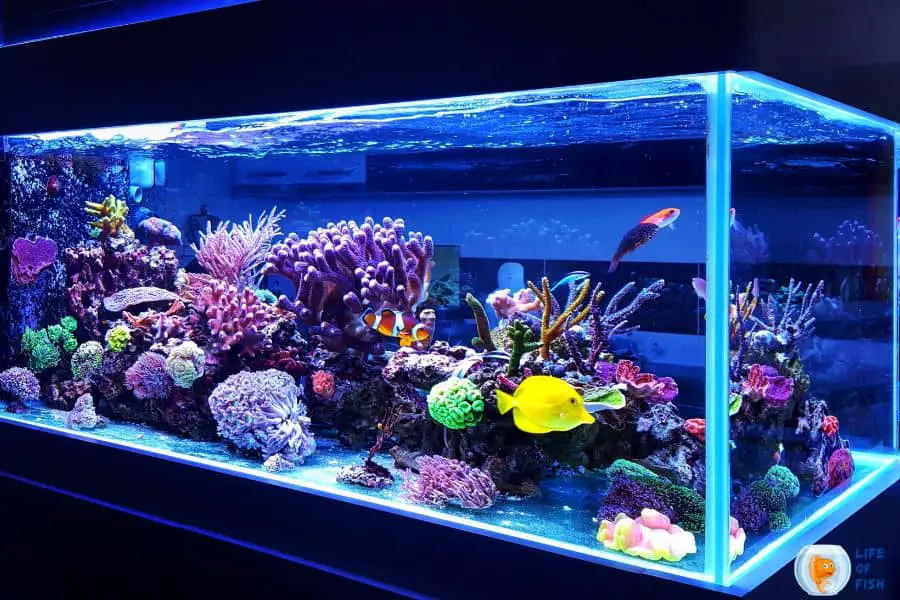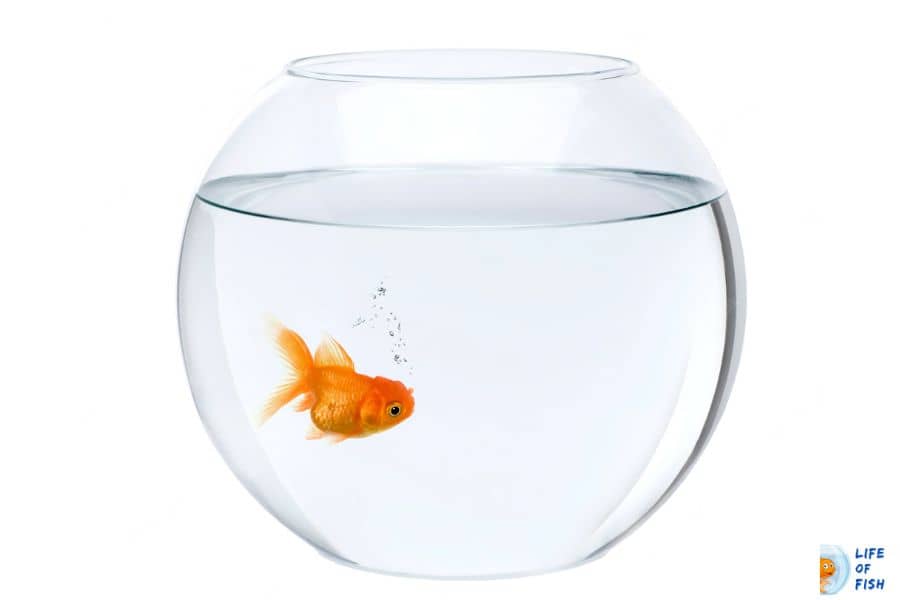Ph, GH, and KH are terms that are often used interchangeably, but they are three distinct parameters important to water quality in aquariums and ponds. However, most beginner hobbyists are not aware of the differences between these parameters and how they affect the fish and plants in their aquariums.
In this article, we will explain Ph, GH, and KH parameters, how they are measured, and why they are important for the health of your aquarium. In the meantime, we will teach you how to change these parameters in your aquarium water if necessary.

What Is Ph In Aquarium?
Jump To
- 1 What Is Ph In Aquarium?
- 2 The Impact Of Ph In An Aquarium
- 3 How To Test pH In An Aquarium?
- 4 What Is The Ideal pH Level For An Aquarium?
- 5 What Causes Low Ph In A Fish Tank?
- 6 How To Raise pH In A Fish Tank?
- 7 What Causes High Ph In A Fish Tank?
- 8 What Is Gh In Aquarium?
- 9 How To Test GH In A Fish Tank?
- 10 Ideal Gh Level For Aquariums
- 11 What Causes High Gh In A Fish Tank?
- 12 How To Lower Gh In Aquarium?
- 13 What Causes Low Gh In A Fish Tank?
- 14 How To Raise Gh In Aquarium?
- 15 What Is Kh In Aquarium?
- 16 Ideal Kh Level For Aquariums
- 17 What Is The Difference Between Gh And Kh?
- 18 How Does Kh Affect Ph?
- 19 What Causes High Kh In A Fish Tank?
- 20 How To Lower Kh In Aquarium?
- 21 What Causes Low Kh In A Fish Tank?
- 22 How To Raise Kh In Aquarium?
- 23 Conclusion on pH Gh and Kh
- 24 Related question
pH or Power of Hydrogen is a measure of the hydrogen ion concentration in water and is one of the most critical parameters to test for in aquariums. The pH scale is logarithmic, which means that each number on the pH scale represents ten times the hydrogen ion concentration of the previous number.
For example, a pH of 6.0 is ten times more acidic than a pH of 7.0. The lower the PH number, the more acidic the water is. Ph is measured from 0 to 14, with 7.0 being neutral. Anything below 7.0 is considered acidic, and anything above 7.0 is considered basic or alkaline.
The Impact Of Ph In An Aquarium
The pH level in an aquarium is important because it can affect the fish and plant life living in the tank. The pH level can determine how well certain minerals and chemicals are dissolved in the water. If the pH level of your tank is too high or too low, it can be difficult for the fish and plants to absorb these minerals and chemicals, which could ultimately lead to their death.
Further, acidic water below 6.0 pH can kill beneficial bacteria that are important for the cycling of the aquarium. On the other hand, fish waste products, such as feces and decaying food particles, can alter the pH balance, making the water more acidic. If the pH level drops too low, it can be very stressful for the fish and can even kill them. Therefore, it is important to regularly test your aquarium’s pH level and maintain it within a safe range for the fish and plants.
How To Test pH In An Aquarium?
pH can be measured using a variety of methods, but the most common and accurate method is to use a pH test kit. pH test kits come in a variety of forms, but the most popular are the liquid test kits. To use a liquid test kit, simply follow the instructions that come with the kit. In general, you will add a few drops of the pH testing solution to a sample of your aquarium water and then compare the color of the water to the chart that comes with the kit. Most pet stores and online vendors sell pH test kits.

What Is The Ideal pH Level For An Aquarium?
The ideal pH level for an aquarium may vary depending on the type of fish and plants you have. Most freshwater fish and plants can tolerate a wide range of pH levels, from 6.0 to 8.0. However, there are some fish and plants that prefer a more acidic or more basic pH level.
For example, discus fish, hatchet fish, crystal shrimp, and most South American fish prefer a slightly acidic pH level between 5.0 and 7.0, while African cichlids, mollies, Rainbowfish, and most Sulawesi shrimp prefer a slightly alkaline pH level between 7.0 and 8.0. Generally, most fish species can tolerate small fluctuations in pH, but it is important to maintain a consistent pH level to avoid stressing the fish.
What Causes Low Ph In A Fish Tank?
Several factors can cause the pH level in an aquarium to decline. One common cause is the decomposition of organic matter, such as fish waste, uneaten food, and plant matter. As this organic matter decomposes, it releases acids into the water, which can lower the pH level.
Another common cause of low pH is the use of tap water to fill the aquarium. Tap water often contains several chemicals, such as chlorine and chloramine, which can lower the pH level of the water. Finally, some aquarium substrates, such as peat moss and driftwood, can also lower the pH level of the water over time.
Usually, the pH level will decline fast for several reasons.
- Overstocking of fish
- Overfeeding of fish
- Poor filtration
- Under cycling the tank
- Lack of aeration
- A large number of live plants
If you have a pH outbreak, you will notice the following:
- The fish may stop eating and become lethargic.
- The fish may gasp for oxygen at the surface of the water.
- The fish may develop white spots or blotches on their skin.
- The fish may become more susceptible to diseases.
If you see any of these changes in your fish, it is important to test the pH level of your aquarium and take steps to raise the pH level if it is below 6.0.
How To Raise pH In A Fish Tank?
If the pH level in your fish tank is below 6.0, there are a few things you can do to raise it.
Those are;
Using a pH buffer.
A pH buffer is a substance that can be added to the water to raise the pH level. pH buffers are available at most pet stores and online retailers. They will come in many different names, but you should check if they are safe for use with fish before purchasing them. To use a pH buffer, simply follow the instructions on the package. In general, you will add the pH buffer to your aquarium according to the directions and then test the pH level again after 24 hours.
Add crushed coral or Argonite sand to your aquarium.
Crushed coral and Argonite sand are both alkaline substances that can be added to an aquarium to raise the pH level. To use them in your tank, simply add them to your aquarium according to the instructions on the package. After 24 hours, test the pH level of your aquarium to ensure that it has been elevated to the correct amount.
Using sodium bicarbonate (baking soda).
Sodium bicarbonate is a common home product used to raise the pH of an aquarium. To use it, simply dissolve one teaspoon of baking soda in 1 gallon of water and add it to your aquarium. Testing pH level after 24 hours is necessary to make sure that the pH level has been raised to the desired level.

What Causes High Ph In A Fish Tank?
Usually, pH spikes are not common in aquariums. The most common pH change will be a gradual decline over time. However, a few factors might cause the pH level in an aquarium to rise.
- Use calcium-rich stones and rocks like limestone or dolomite in the aquarium.
- Use too much backing soda or pH buffers when trying to raise the pH level.
- Water evaporation. As water evaporates, it becomes more concentrated, and the pH level rises.
- Use of tap water
- Ineffective filter
If the pH spike is not sudden, your fish may not be affected. However, if the pH level rises too fast, it can be deadly for your fish. In this case, you can lower the pH level by adding an acid, such as vinegar, to the aquarium. Or else, add some RO water to bring it down.
What Is Gh In Aquarium?
GH stands for General Hardness and measures the total amount of dissolved minerals in the water. The GH level is usually expressed in degrees, such as degrees GH. GH level can be affected by many things, such as the type of water you use, the type of aquarium substrate you have, and the addition of chemicals to the water.
The GH level is important because it can affect the health of your fish and plants. Some fish and plants require a certain GH level to thrive, while others can tolerate a wide range of GH levels. If the GH level in your aquarium is too high or too low, it can cause problems for your fish and plants.
Symptoms of low GH levels include poor appetite, slow growth rate, lethargy, and faded colors in fish. Plants may also show signs of calcium or other mineral deficiencies. Shrimp may have difficulty molting, and snails may have thin, flaking, or pitted shells.
How To Test GH In A Fish Tank?
You can test GH with a simple water test kit. GH test kits are available at most pet stores and online retailers. To use a GH test kit, simply follow the instructions on the package. In general, you will add a few drops of the test solution to a sample of water from your aquarium and compare the color of the water to the color chart included with the kit. Additionally, you can use a multi-test strip to test for both GH and KH.
Note: GH measures both calcium and magnesium levels in the water. If your tank has correct GH levels and still your fish and shrimps show any Low GH symptoms, then it is most likely that the problem is with calcium levels and not magnesium. In this case, use a Calcium test kit to determine the calcium levels in your aquarium.

Ideal Gh Level For Aquariums
The ideal GH level for a freshwater aquarium is 4-8 dGH (or 70-140 ppm). This provides the necessary minerals while still being acceptable for most fish. Some fish, like livebearers, goldfish, and African cichlids, prefer higher GH levels, while other fish, like discus and other soft water fish, prefer lower GH levels. If you want to breed discus or other soft water fish, you may have to lower the GH to 3 dGH (or 50 ppm) or below.
What Causes High Gh In A Fish Tank?
A few factors might cause the GH level in an aquarium to rise:
- Use of hard water. This is the most common cause of high GH levels.
- Use of limestone or dolomite in the aquarium.
- Use of chemicals to raise the GH level.
- Water evaporation. As water evaporates, it becomes more concentrated, and the GH level rises.
How To Lower Gh In Aquarium?
If the GH level in your aquarium is too high, you can lower it by using distilled water or reverse osmosis (RO) water to dilute the water. You can also add peat moss to the aquarium to lower the GH level. However, using a water softener is the easiest way to lower GH in your aquarium.
What Causes Low Gh In A Fish Tank?
A few factors might cause the GH level in an aquarium to drop:
- Use of RO water. The most prevalent reason for low GH levels is this.
- Use of chemicals to lower the GH level.
How To Raise Gh In Aquarium?
If the GH level in your aquarium is too low, you can raise it by using hard water or adding minerals to the water. You can also use crushed coral or seashells to raise the GH level.
What Is Kh In Aquarium?
KH stands for Carbonate Hardness, and it measures the amount of carbonate and bicarbonate in the water. The KH level is usually expressed in degrees, such as degrees KH. KH level can be affected by many things, including adding chemicals to the water, evaporation, and using reverse osmosis (RO) filters.
The KH level is important because it can affect the pH level in your aquarium. If the KH level is too low, the pH level may become unstable and fluctuate rapidly. This can cause problems for your fish and plants. If the KH level is too high, the pH level may become too alkaline and cause problems for your fish and plants.
Ideal Kh Level For Aquariums
The ideal KH level for a freshwater aquarium is 4-8 dKH (or 70-140 ppm). This provides the necessary buffering capacity while still being acceptable for most fish. Some fish, like African cichlids, prefer higher KH levels higher than 10dKH, while other fish, like discus and other soft water fish and some shrimp species like crystal shrimp, prefer lower KH levels less than 3dKH.

What Is The Difference Between Gh And Kh?
GH and KH are both measures of water hardness, but they measure different things. GH assesses the overall amount of dissolved minerals in the water, whereas KH measures carbonate hardness. When people talk about the hardness of water, they usually mean the GH level. You can change the GH without affecting KH or PH, but you can not change KH without affecting GH and PH.
How Does Kh Affect Ph?
KH affects pH in two ways. First, KH buffers the water, which means it helps to stabilize the pH level. Second, KH provides carbonate ions, which are necessary for the proper function of the fish gills.
A low KH can indicate that the water has an inadequate buffering capacity, meaning that the pH level swings quickly. On the other hand, if the KH is high, then it means that the water has a higher buffering capacity, making it difficult to change the pH level.
What Causes High Kh In A Fish Tank?
Few factors might cause the KH level in an aquarium to rise:
- Use of hard water. This is the most common cause of high KH levels.
- Use of limestone or dolomite in the aquarium.
- Use of chemicals to raise the KH level.
- Water evaporation. As water evaporates, it becomes more concentrated, and the KH level rises.
How To Lower Kh In Aquarium?
If the KH level in your tank is too high, you can lower it by using RO water or distilled water to dilute the water. You can also use chemicals to lower the KH level. However, using a water softener is the easiest way to lower KH in your aquarium.
What Causes Low Kh In A Fish Tank?
A few factors might cause the KH level of an aquarium to drop:
- Use of RO water. The most prevalent reason for low KH levels is this.
- Use of chemicals to lower the KH level.
How To Raise Kh In Aquarium?
If the KH level in your tank is too low, you can raise it by using hard water or adding minerals to the water. You can also use crushed coral or seashells to raise the KH level.
| pH | KH | GH | |
| What is? | Hydrogen ion concentration | Carbonate Hardness (amount of carbonate and bicarbonate in the water) | The total amount of dissolved minerals |
| Ideal level | 6.0 to 8.0 | 4-8 dKH (or 70-140 ppm) | 4-8 dGH (or 70-140 ppm) |
| How To Lower | Using RO water or distilled water | RO water or distilled water | Using RO water or distilled water |
Conclusion on pH Gh and Kh
As you can see, pH Gh and Kh are closely related to each other, and it is important to maintain all of them at the correct levels for the health of your fish and plants. Most of the time, the causes of these parameter fluctuations are identical, so it is important to identify and correct the cause.
The easiest solution is to use an all-in-one aquarium test kit to keep track of all the parameters in your aquarium and make the necessary adjustments. When changing the pH, Gh, and Kh levels in your fish tank, remember to do it over a period of time to allow your fish to adjust. Sudden changes in these parameters can be fatal for your fish.
Related question
How To Raise Kh In Aquarium Naturally?
The easiest way to raise the KH level in your aquarium is to use hard water or add minerals to the water. You can also use crushed coral or seashells to raise the KH level.
How To Raise Kh Without Raising Ph?
You cannot raise KH without also raising pH. Raising the KH level raises the pH because the presence of alkaline ions determines the hardness of the water.
Read Next : How To Stop Condensation In Fish Tank Hood
